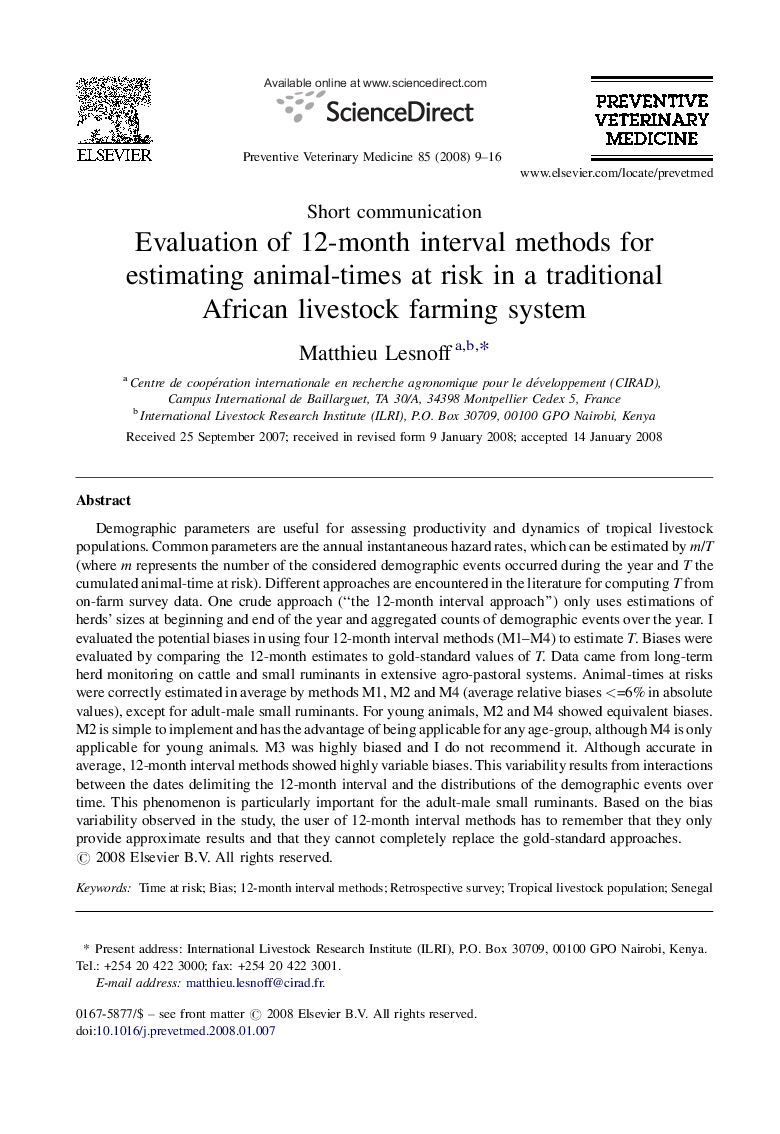| کد مقاله | کد نشریه | سال انتشار | مقاله انگلیسی | نسخه تمام متن |
|---|---|---|---|---|
| 2453318 | 1554217 | 2008 | 8 صفحه PDF | دانلود رایگان |

Demographic parameters are useful for assessing productivity and dynamics of tropical livestock populations. Common parameters are the annual instantaneous hazard rates, which can be estimated by m/T (where m represents the number of the considered demographic events occurred during the year and T the cumulated animal-time at risk). Different approaches are encountered in the literature for computing T from on-farm survey data. One crude approach (“the 12-month interval approach”) only uses estimations of herds’ sizes at beginning and end of the year and aggregated counts of demographic events over the year. I evaluated the potential biases in using four 12-month interval methods (M1–M4) to estimate T. Biases were evaluated by comparing the 12-month estimates to gold-standard values of T. Data came from long-term herd monitoring on cattle and small ruminants in extensive agro-pastoral systems. Animal-times at risks were correctly estimated in average by methods M1, M2 and M4 (average relative biases <=6% in absolute values), except for adult-male small ruminants. For young animals, M2 and M4 showed equivalent biases. M2 is simple to implement and has the advantage of being applicable for any age-group, although M4 is only applicable for young animals. M3 was highly biased and I do not recommend it. Although accurate in average, 12-month interval methods showed highly variable biases. This variability results from interactions between the dates delimiting the 12-month interval and the distributions of the demographic events over time. This phenomenon is particularly important for the adult-male small ruminants. Based on the bias variability observed in the study, the user of 12-month interval methods has to remember that they only provide approximate results and that they cannot completely replace the gold-standard approaches.
Journal: Preventive Veterinary Medicine - Volume 85, Issues 1–2, 15 June 2008, Pages 9–16